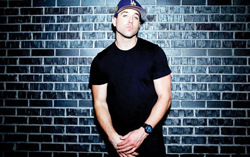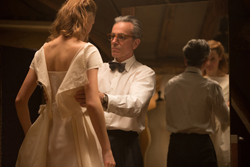Ex Libris: New York Public Library is a Legendary documentarian Frederick Wiseman explores the New York City Public Library as it enters the digital age.
Although many may think libraries are a dying institution, Wiseman beautifully shows how they continue to thrive in a digitized world.
However, at close to three-and-a-half-hours, it can be a challenging watch.
Instead of employees or patrons of the New York Public Library approach the camera and explain to the audience how each function benefits their community, Wiseman brilliantly lets the camera roll during the events to show of the library’s importance, rather than tell of it.
There are a myriad of programs provided by the library like classes on how to read braille, job fairs, robotics clubs, slam poetry, and author conversations that help bring a community together through education.
Outside of programs, patrons can use the many educational resources of a library like books, microfilm, laptops, and take-home broadband hotspots for those who do not have an internet connection.
Behind all of the library’s functions, there are meetings concerning their budget and patrons, where the president and his administration discuss how they can improve the public institution.
There are plenty of meetings where the president encourages funding from both public and private resources to tackle their current problems in the technologically fast-paced world, like digitalizing their entire print collection.
Although the library may face this problem, it is still amazing to see many patrons continue to use microfilm and read newspapers.
Wiseman tells of all this information just by placing the camera in the middle of a function or program. For instance, during a class trip to the library’s picture collection, Wiseman captures employees explaining the importance of the collection to the class.
Another example is when the camera is sitting among those at a book club meeting, while the members discuss their opinions of the recent read.
Wiseman beautifully transitions to each function by cutting to a few outside shots of the city, then eventually making the way to a shot outside the branch where the new function is happening.
Although there are so many different things going on at the library, Wiseman lets each function bleed into the next.
The obvious issue of the documentary is its running time. With a length of three-and-a-half-hours, it can be challenging to keep interest in the library’s functions.
At around the two-hour mark, one may get the point. Although Wiseman’s approach is unique, the camera can roll for a bit too long at each event.
Staff meetings are something we all try to avoid in real life and sitting through over five can feel dull after a while. The moments that deserve the long roll time are when patrons are discussing issues in their community or smaller staff meetings where employees talk about the difficulty of attracting teens to the institution.
On the other hand, meetings about budgeting and policy get boring fast.
If Wiseman were to cut the documentary to around two to two-and-a-half-hours, it would be much more enjoyable.
Despite its ridiculous run-time, the 87-year-old documentarian beautifully pays homage to the New York Public Library. Its cinematography is well done, as Wiseman places the camera in the heat of a moment.
Through the cinematography, Wiseman is able to tell of the library’s importance in the different communities across the city.
Additionally, through capturing meetings, Wiseman brings the institution’s problems in the digital world to the forefront. If one has the time and patience, they may want to check this out.



